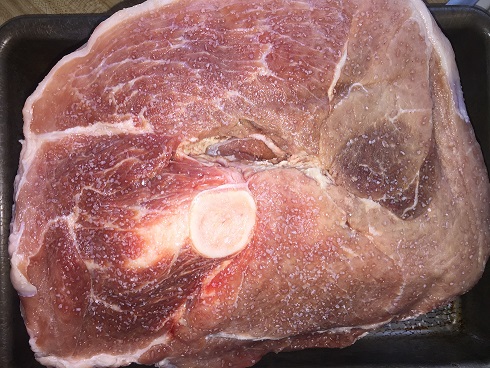Whole duck on the Pit Barrel Cooker
/I have struggled to cook a whole duck successfully. First I tried a modified version of Julia Child’s recipe: modified in that I cooked the duck the way she described, but I didn’t do all the other fiddly stuff on the side like taking the membrane off orange slices. In my opinion, having tried several other Julia Child recipes in the past, either Julia Child never actually cooked anything, or whoever wrote her cookbooks got the recipes wrong. Julia’s duck was a disaster, and in hindsight her instructions had us cooking the duck for a stupidly long time and at insane temperatures.
This time I tried cooking/smoking the duck on/in our pit barrel cooker. We have used a Pit Barrel Cooker* for years; it’s not perfect but I like it. This is not a recommendation, because I don’t know what you like, but I’m happy with it.
I rubbed the duck in oil and a spice rub, fired up the charcoal, and hung the duck from the rebar. It was supposed to take 3 hours. After 2 hours the breast meat was registering 190 degrees (it’s supposed to be 140) and the skin was very nicely browned. However, I found that there was still a pretty thick layer of fat under the skin. This is supposed to render out at the initially high cooking temperature, which clearly didn’t happen. I put the duck under the broiler for 5 minutes or so which successfully rendered the fat and crisped up the skin.
Despite being technically overcooked, this duck turned out really well. The meat was certainly not tough and chewy but was instead relatively tender and flavorful, the skin was (reasonably) crispy, and overall it was a very good experience. In the future I will probably try starting the duck under the broiler first, to get the fat bubbling, and then hanging it in the pit barrel cooker to finish — and watching the temperature more closely.
* A pit barrel cooker (whether sold by the company of that name or from some other source) is basically a steel barrel with air holes in it and a lid. You light a charcoal fire in the bottom and hang meat on hooks from a piece of rebar across the top. The idea is that as the fat from your meat drips on the charcoal, it makes smoke: not wood smoke like in an actual smoker, but enough so you get at least some smoky flavor. Meanwhile the meat cooks through convection as heat rises from the charcoal.





